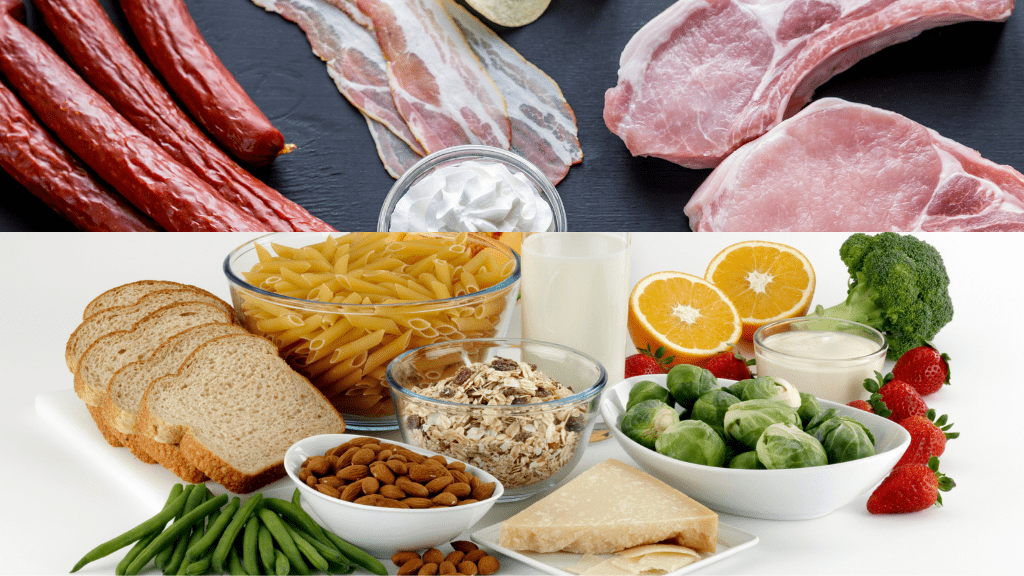The Role of High-Fiber Vegetables in Reducing Cholesterol
High-fiber vegetables are a powerful tool in the fight against high cholesterol, a major risk factor for heart disease and stroke. Incorporating these nutrient-rich foods into your diet can have a significant impact on your cholesterol levels and overall cardiovascular health. In this blog post, we’ll explore how high-fiber vegetables contribute to cholesterol reduction, the types of fiber involved, and practical tips for incorporating more of these vegetables into your daily meals.
Understanding Cholesterol and Its Impact on Health
Cholesterol is a fatty substance found in your blood that is essential for building healthy cells, producing hormones, and supporting digestion. However, when cholesterol levels become too high, particularly low-density lipoprotein (LDL) cholesterol, it can lead to the buildup of fatty deposits in your blood vessels, increasing the risk of heart disease and stroke.
There are two main types of cholesterol:
- LDL (Low-Density Lipoprotein): Often referred to as “bad” cholesterol, LDL contributes to the buildup of plaque in the arteries, which can lead to blockages, heart attacks, and strokes.
- HDL (High-Density Lipoprotein): Known as “good” cholesterol, HDL helps remove LDL cholesterol from the arteries and transport it to the liver for excretion.
Diet plays a crucial role in managing cholesterol levels, and high-fiber vegetables are particularly effective in lowering LDL cholesterol and improving heart health.
The Role of Soluble Fiber in Cholesterol Reduction
The primary way high-fiber vegetables help reduce cholesterol is through their soluble fiber content. Soluble fiber dissolves in water and forms a gel-like substance in the digestive tract. This gel can bind to cholesterol and bile acids in the intestines, preventing them from being absorbed into the bloodstream. Instead, they are excreted from the body, leading to a reduction in overall cholesterol levels.
When you consume high-fiber vegetables regularly, the soluble fiber helps lower LDL cholesterol by:
- Reducing Cholesterol Absorption: By binding to cholesterol in the digestive tract, soluble fiber reduces the amount of cholesterol that enters the bloodstream.
- Decreasing Bile Acid Reabsorption: The liver uses cholesterol to produce bile acids, which help digest fats. Soluble fiber binds to bile acids, preventing their reabsorption and forcing the liver to use more cholesterol to produce new bile acids, thereby lowering blood cholesterol levels.
High-Fiber Vegetables Rich in Soluble Fiber
Not all high-fiber vegetables are equally effective in lowering cholesterol, as they vary in their soluble fiber content. Some of the best vegetables for reducing cholesterol include:
- Carrots: A good source of soluble fiber, carrots can help lower LDL cholesterol levels when consumed regularly.
- Brussels Sprouts: These cruciferous vegetables are rich in soluble fiber and also contain compounds that support heart health.
- Sweet Potatoes: High in soluble fiber, sweet potatoes are not only good for cholesterol but also provide a host of other nutrients like vitamins A and C.
- Broccoli: Another cruciferous vegetable, broccoli is high in soluble fiber and offers additional heart-healthy benefits due to its antioxidant content.
- Artichokes: Artichokes are particularly high in soluble fiber, making them an excellent choice for lowering cholesterol.
Incorporating these vegetables into your diet can significantly contribute to reducing LDL cholesterol and improving overall cardiovascular health.
The Importance of Insoluble Fiber in Heart Health
While soluble fiber is the star player in cholesterol reduction, insoluble fiber also plays a role in supporting heart health. Insoluble fiber adds bulk to the stool and helps maintain regular bowel movements, which can prevent conditions like constipation and diverticulosis. A healthy digestive system is essential for overall well-being, and a well-functioning digestive tract can indirectly support heart health by ensuring that waste products and excess cholesterol are efficiently eliminated from the body.
Moreover, foods rich in insoluble fiber are often packed with other nutrients that contribute to heart health, such as vitamins, minerals, and antioxidants. By consuming a variety of high-fiber vegetables, you can ensure that you’re getting both types of fiber, along with the additional nutrients your heart needs to stay healthy.
The Role of Phytochemicals in Cholesterol Management
In addition to fiber, high-fiber vegetables are also rich in phytochemicals—bioactive compounds that have protective effects against chronic diseases, including heart disease. Many high-fiber vegetables contain plant sterols and stanols, which are similar in structure to cholesterol and can block its absorption in the intestines. This further helps to lower LDL cholesterol levels.
For example, vegetables like broccoli, Brussels sprouts, and kale are not only high in fiber but also contain phytochemicals like sulforaphane, which has been shown to have cholesterol-lowering effects. These compounds work synergistically with fiber to enhance the cholesterol-lowering benefits of high-fiber vegetables.
Practical Tips for Incorporating High-Fiber Vegetables into Your Diet
Given the clear benefits of high-fiber vegetables for cholesterol reduction, it’s important to find ways to incorporate more of these foods into your daily meals. Here are some practical tips to help you do just that:
- Start Your Day with Vegetables: Incorporate high-fiber vegetables into your breakfast. Add spinach or kale to your morning smoothie, or include sautéed vegetables like mushrooms, tomatoes, and bell peppers in your omelet.
- Snack on Vegetables: Keep cut-up carrots, celery, and bell peppers on hand for a quick, high-fiber snack. You can dip them in hummus or guacamole for added flavor and nutrition.
- Add Vegetables to Every Meal: Aim to include at least one high-fiber vegetable in every meal. For lunch, add a side salad with a variety of colorful vegetables, and for dinner, include roasted Brussels sprouts, steamed broccoli, or a baked sweet potato.
- Experiment with Different Cooking Methods: To keep your meals interesting, try different ways of preparing vegetables. Roasting, grilling, steaming, and stir-frying are all excellent methods that can bring out the natural flavors of high-fiber vegetables.
- Incorporate Vegetables into Soups and Stews: Soups and stews are a great way to pack in a variety of high-fiber vegetables. Consider making a hearty vegetable soup with ingredients like carrots, celery, and broccoli, or a stew with sweet potatoes and artichokes.
The Long-Term Benefits of a High-Fiber Diet
A diet rich in high-fiber vegetables doesn’t just lower cholesterol; it also supports long-term cardiovascular health by reducing the risk of heart disease, stroke, and other chronic conditions. High-fiber diets are associated with lower blood pressure, reduced inflammation, and improved blood sugar control, all of which contribute to a healthier heart.
Moreover, the benefits of high-fiber vegetables extend beyond heart health. They promote digestive health, support a healthy weight, and provide essential nutrients that contribute to overall well-being. By making high-fiber vegetables a regular part of your diet, you’re investing in your long-term health and reducing your risk of chronic diseases.
FAQs About
1. How do high-fiber vegetables help reduce cholesterol levels?
High-fiber vegetables, particularly those rich in soluble fiber, bind to cholesterol in the digestive tract, preventing its absorption into the bloodstream. This process helps lower the levels of LDL (low-density lipoprotein) cholesterol, commonly known as "bad" cholesterol.
2. Which high-fiber vegetables are most effective in lowering cholesterol?
Vegetables like Brussels sprouts, broccoli, carrots, and sweet potatoes are particularly effective due to their high content of soluble fiber. Additionally, legumes such as beans and lentils are also excellent for reducing cholesterol.
3. How much fiber should I consume daily to reduce cholesterol?
To effectively reduce cholesterol, it's recommended to consume at least 25-30 grams of fiber daily, with a focus on soluble fiber. Incorporating a variety of high-fiber vegetables into your diet can help you reach this target.
4. Can eating high-fiber vegetables alone significantly lower cholesterol?
While high-fiber vegetables can significantly impact cholesterol levels, they work best when combined with other heart-healthy lifestyle choices, such as regular exercise, reducing saturated fats, and avoiding trans fats.
5. How long does it take for high-fiber vegetables to lower cholesterol?
The impact of a high-fiber diet on cholesterol levels can vary, but improvements are often seen within a few weeks to a few months, depending on individual factors like overall diet, activity level, and genetics. Consistency is key for long-term benefits.
Conclusion
High-fiber vegetables play a crucial role in reducing cholesterol and supporting heart health. The soluble fiber in these vegetables binds to cholesterol and bile acids in the digestive tract, preventing their absorption and promoting their excretion. In addition to fiber, high-fiber vegetables are rich in phytochemicals that further enhance their cholesterol-lowering effects.
By incorporating a variety of high-fiber vegetables into your diet, you can significantly reduce your LDL cholesterol levels and improve your overall cardiovascular health. Whether you’re adding more vegetables to your meals, experimenting with new cooking methods, or enjoying them as snacks, there are countless ways to enjoy the benefits of these heart-healthy foods. Make high-fiber vegetables a cornerstone of your diet and take an important step toward a healthier heart.




